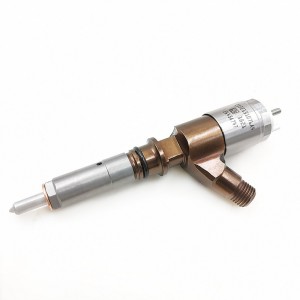New High Quality Diesel Nozzle L468PBB for Injection Nozzle Diesel Engine Parts
Products Description
| Reference. Codes | L468PBB |
| Application | / |
| MOQ | 12PCS |
| Certification | ISO9001 |
| Place of Origin | China |
| Packaging | Neutral packing |
| Quality Control | 100% tested before shipment |
| Lead time | 7~15 working days |
| Payment | T/T, L/C, Paypal, Western Union, MoneyGram or as your requirement |
Research on key technologies and performance optimization of fuel injector nozzles
The fuel injector nozzle is the core of the fuel injection system, and its performance determines engine performance. This article deeply analyzes the structure and operating principle of the fuel injector nozzle, discusses key technologies and performance optimization strategies, and looks at future development trends, providing theoretical support for its technological upgrade and application.
I. Introduction
In the context of energy conservation, emission reduction, and improving engine efficiency, optimizing the performance of the fuel injector nozzle is crucial. It directly affects the fuel atomization, mixing, and combustion processes, and plays a decisive role in engine power, economy, and emissions.
II. Fuel Injector Nozzle Structure and Operating Principle
2.1 Structural Components
The fuel injector nozzle primarily consists of a needle valve, needle valve body, spring, armature, and solenoid. The needle valve and needle valve body form a high-precision mating component with micron-level clearances, controlling fuel injection. The spring provides closing force, while the armature and solenoid control the needle valve's opening.
2.2 Operating Principle
The nozzle operates in three steps: opening, injection, and closing. During opening, the solenoid coil is energized, causing the armature to lift the needle valve, overcoming the spring force and opening the injection orifice. During the injection phase, fuel is sprayed out at high pressure, with parameters determined by the nozzle structure and ECU control. When closed, the solenoid coil is de-energized, and the needle valve retracts under spring force, closing the injection orifice.
III. Key Technical Specifications
3.1 Injection Accuracy
Injection quantity accuracy is affected by needle valve clearance, nozzle orifice size, fuel pressure, and solenoid control accuracy. High precision can achieve injection quantity accuracy within ±1%. Injection timing accuracy depends on solenoid response, needle valve movement, and ECU control. Advanced technology can achieve accuracy of ±0.5°CA.
3.2 Atomization Performance
Atomized particle size is related to nozzle orifice structure and injection pressure. Micro-pore nozzles combined with high pressure can achieve particle sizes of 10-20μm. The spray cone angle is determined by the needle valve and nozzle orifice. A suitable angle (60°-120°) promotes uniform mixing of fuel and air.
3.3 Durability and Reliability
Material selection is based on alloys with high hardness, wear resistance, and high temperature resistance, such as tungsten-molybdenum alloy steel. Treatment is performed to enhance hardness and thermal stability. Surface coatings and optimized fuel filtration are also implemented to reduce wear and corrosion, thereby extending service life.
IV. Performance Optimization Strategies
4.1 Structural Parameter Optimization
Using multi-physics coupled simulations such as CFD and EM, combined with the response surface methodology, we optimize parameters such as nozzle diameter and needle lift to enhance nozzle performance. Research shows that optimization improves injection accuracy by 20% and reduces atomized particle size by 15%.
4.2 Material and Process Upgrades
Innovative materials such as ceramic-based and nano-coatings are used to enhance hardness, wear resistance, and lubricity. Ultra-precision machining and 3D printing technologies enhance manufacturing accuracy, optimize internal flow paths, and reduce pressure loss by 10%-15%.
4.3 Intelligent Control and Monitoring
The ECU utilizes adaptive and fuzzy control algorithms to dynamically adjust injection parameters based on engine operating conditions, improving fuel economy and emissions. Integrating multiple sensors and utilizing fusion technology enables early fault warning and precise diagnosis.
V. Development Trends
Future injector nozzles will develop towards ultra-high-pressure injection, precise atomization, and intelligent integration. Ultra-high pressure improves atomization and combustion efficiency, precise control ensures injection accuracy, and intelligent integration enables real-time monitoring and optimization, meeting the engine's requirements for efficiency and cleanliness.
VI. Conclusion
Optimizing injector nozzle performance is of great significance to engine development. Performance can be enhanced through innovations in structure, materials, processes, and control technologies. Continuous research and development of new technologies will drive continuous advancements in injector nozzles, providing support for improved engine performance.



















